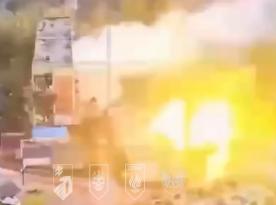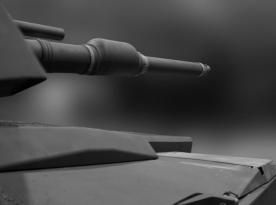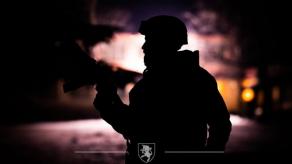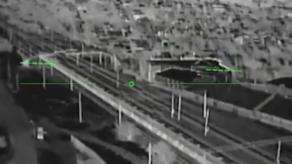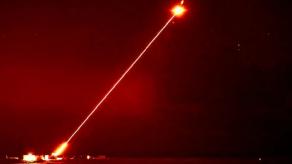Ukrainians are developing a new type of unmanned aerial vehicle, a video of tests was shared by The Military Journal channel in Telegram. As noted, this drone is driven by a jet engine and was designed to counter other UAVs or helicopters. That is, it's an air defense system.
The specifications are currently unknown but in the footage, the Bullet managed to reach a speed of 130 km/h. One set of this equipment includes five drones at a cost of UAH 5.8 million (~$140,000). The authors note that this is not the first attempt of Ukrainian engineers to create a jet-powered UAV.
Read more: Why Everyone's So Excited About the New XRQ-73 with Propellers (Photo)
Defense Express adds that as far as the video showcases, the Bullet's configuration is very conventional, unlike the mentioned previous attempts to create a flying wing or a canard-type suicide drone. Overall, it looks more like one of the winged FPV drones, especially with its control apparently being provided via an analog signal video link.

That said, this development is not a full-fledged loitering munition, although it has features of one. For a reminder, an important component of a loitering munition is partial or fully autonomous operation mode, in which the drone relies on its sensors to acquire the target and software to abort the mission if the signal connection is lost. For now, these are only tests, so the additional equipment for the Bullet might be revealed in the future.
Still, the issue persists if this unmanned interceptor will be able to operate under electronic warfare suppression, when the manual control is lost. This will be a major factor determining the Bullet's combat effectiveness in the near-frontline areas.
Also, speed is crucial. A 2022 study published in the Journal of Rocket-Space Technology by O. Zhuhan and D. Kalinichenko, specialists of Ukraine-based Yuzhnoye State Design Office, lists down typical targets a Ukrainian-made loitering munition is expected to intercept as an air defense weapon. Their specifications are as follows:
| Aircraft type | Maximum speed | Ceiling |
| Rubezh-20 UAV | 140 km/h | 4,000 m |
| Orlan-10 UAV | 150 km/h | 6,000 m |
| Forpost UAV | 200 km/h | 7,010 m |
| Shahed 129 UAV | 150 km/h | 7,300 m |
| Orion UAV | 200 km/h | 7,500 m. |
| Lancet-3 UAV | 110 km/h | n/a |
| Ababil-T UAV | 305 km/h | 3,000 m |
| Raad-85 UAV | 250 km/h | 3,350 m |
| Shahed-136 UAV | 200 km/h | n/a |
| Mi-8 helicopter | 280 km/h | 6,000 m |
| Mi-24 helicopter | 335 km/h | 5,000 m |
| Mi-28 helicopter | 300 km/h | 5,000 m |
| Ka-52 helicopter | 350 km/h | 5,500 m |
Therefore, the experts conclude, an interceptor must be capable enough to destroy these targets, and this capability requires a drone to have the following specs:
- Maximum speed: up to 800 km/h
- Cruising speed: 450 to 500 km/h
- Maximum flight altitude: up to 8000 m
- Endurance: up to 60 min
- Warhead weight: 12.5 kg
Whether the Bullet, a "jet-powered anti-air FPV drone," can live up to these characteristics, is an open question. So is the practical value of this development, as weapon application in real combat conditions significantly differs from practice. Sometimes, even an M2 Bradley can shoot down a small FPV drone, and sometimes a smart munition can show underwhelming performance due to extensive jamming by EW systems.
Read more: Ukraine Did Not Put JAS 39 Gripen Supply on Hold, Kyiv Assures






